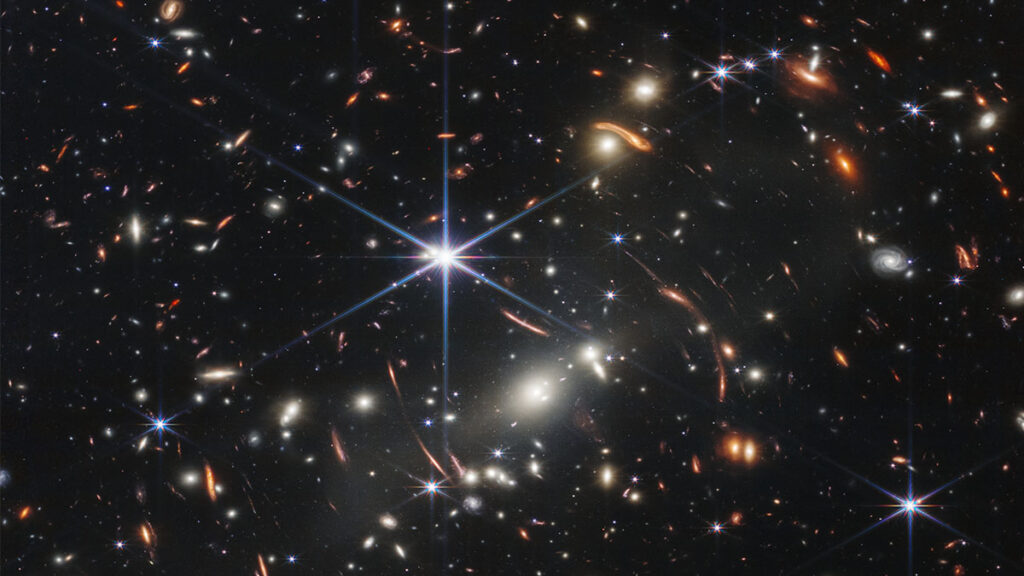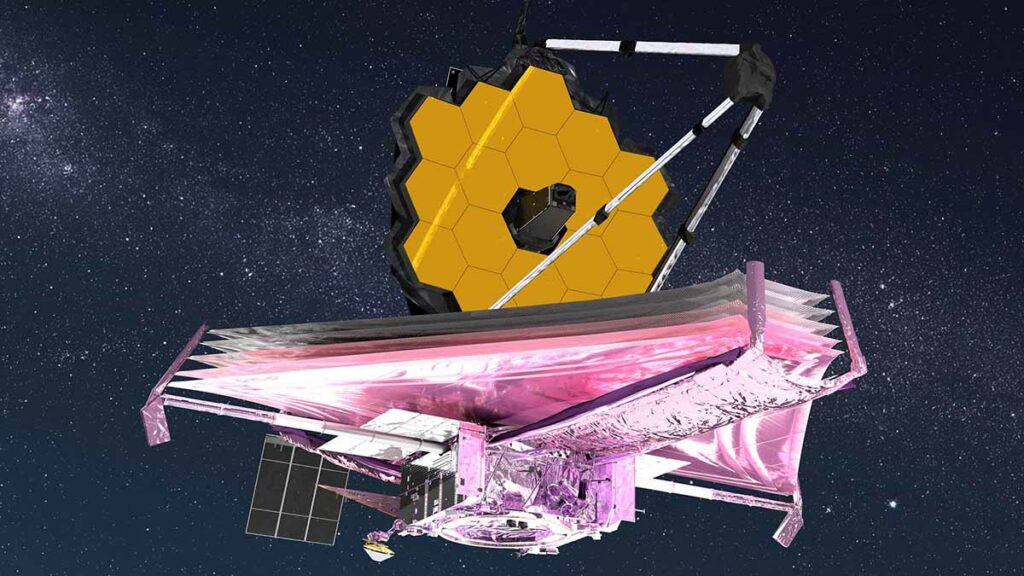NASA’s James Webb Telescope’s First Image Shows Deep Space Like Never Before

We, as human beings, cannot only question what might be lurking in the dark and unknown space but have also built the most sophisticated tools to see what our eyes could not.
Such an example is the James Webb Space Telescope by NASA, which has revealed thousands of galaxies in seamless detail for us to see. The picture is of deep space and shows many galaxies roaming around a center point.
James Webb Telescope’s photo

NASA Administration revealed the photograph during a White House news conference. U.S. President, Joe Biden, and VP Kamala Harris were both present at the occasion.
While the photo is fascinating in itself, as per NASA administrator Bill Nelson, it is just one little speck of the universe. He said that if you held a grain of sand on your finger at arm’s length, that’s how much of the universe you see in the photo.
The small universe fragment, SMACS 0723, shows light from different galaxies, among which are the oldest ones in the universe.
While talking about the landmark achievement, President Biden said that the images would remind the world of what America can do. ‘’That’s who we are as a nation,’’ he added.
The photo is just a preview of what more is to come from a telescope, which scientists built to look into deep space, at some of the first galaxies and stars that were born. NASA will also release high-quality color pictures from the James Webb Space Telescope (JWST).
Hubble Telescope’s successor
The JWST, which took around three decades to make (released in space in December 2021), is the heir of the Hubble Space Telescope that was the foundation of many important discoveries.
The JWST will permit users to zoom in on Hubble’s dimmest flecks. An example is the eXtreme Deep Field, one of Hubble’s most famous photos that show streaks of light representing 5,500 galaxies. The new telescope (JWST) produced a high-resolution view of even the older lights after only 12.5 hours of exposure.

The Webb telescope can capture galaxies far away as they were. The telescope intercepts light in the infrared part of the spectrum, whose wavelengths are too long to be seen by the naked eye. The main goal of this initiative was to catch a glimpse of the first galaxies and stars formed after the ‘big bang.’
The James Webb Telescope is described as the most powerful telescope to ever be in space, and as per VP Harris, it is one of humanity’s “great engineering achievements”.
Now, the focus of researchers has shifted from the marvelous existence of the telescope to the scientific discoveries that it will assist in. In the first year, 286 teams will use the telescope to study Pluto’s climate system, a molten lava planet, a black hole at the center of the Milky Way galaxy, and so on.






